If you enjoyed Smut Clyde’s masterpiece about a Chinese paper mill, currently covering over 400 papers (I know you enjoyed it!), here is your follow-up, with two more paper mills. Their customers are Chinese doctors and academics, who know how to game a crooked system with an impressive-looking research output, all without ever entering a lab.
The investigation was done by Smut Clyde, helped by Elisabeth Bik, Morty and Tiger BB8. For background, please read the Papermill 1 story, which was complemented by Elisabeth’s Bik blogpost, “The Tadpole Paper Mill“. Not a single paper of the currently over 400 has been retracted so far.
The new papermill lists are available for your perusal here: Papermill 2 and Papermill 3. There are also pdf copies:
The first paper mill seems to have partnered with the obscure Italian scholarly publisher Verduci Editore, which is run by Mariella Verduci and which issues the European Review for Medical and Pharmacological Sciences (ERMPS). The journal is edited by two internal medicine professors of Università Cattolica del Sacro Cuore, most other editorial board members are Italian university doctors, many from the same Sacred Heart Catholic University in Rome, but there are also several Chinese names.
54 entirely artificial, made-up papers were recorded there, out of the total of 69 fabrications Smut Clyde attributes to that Chinese paper mill. The Verduci journal boasts an Impact Factor of 2.7 and has a price list which works according to word count, if you are in a hurry, there is a Fast Track for €1800 plus VAT, or more. The publisher warns: “The accepted articles must be paid before the publication and not over 5 months, otherwise, it will be withdrawn.” But do not be fooled that ERMPS is Open Access because even “Paper reprints shall be charged“. Copyright must be signed over to Verduci Editore already at submission stage:
“The original completed Copyright Transfer Agreement must be signed by the corresponding Author and sent by e-mail to European Review for Medical and Pharmacological Sciences.”
Which means, the papermill operators organised the payment and signed copyright transfer, because as Smut Clyde found out, the corresponding authors’ email addresses are as trust-inspiring as their science. However, there is also an editorial ethics statement which concludes with:
“European Review for Medical and Pharmacological Sciences disapproves any kind of malpractice and unethical practice.“
Maybe it is a typo, and Verduci Editore meant to say “ERMPS approves any kind of malpractice and unethical practice as long as we are paid on time”?

The other paper mill seems to be more professional, presently 57 papers were attributed to it by Smut Clyde. It fabricates papers about the amazing medical efficiency of Traditional Chinese Medicine (TCM), just as the Communist Party of China likes it. Smut Clyde suspects that the owners might be working at the Affiliated Hospital of Qingdao University, in Shandong, China.
Whereas it is quite possible that some of that papermill’s target journals, like Verduci’s ERMPS or Elsevier’s Biomedicine & Pharmacotherapy or Life Sciences have no qualms about publishing fraudulent rubbish, other scholarly publishers in the list should have known better. How did ever the German Society of Experimental and Clinical Pharmacology and Toxicology (DGPT) or the American Association for Anatomy become party to the scam?
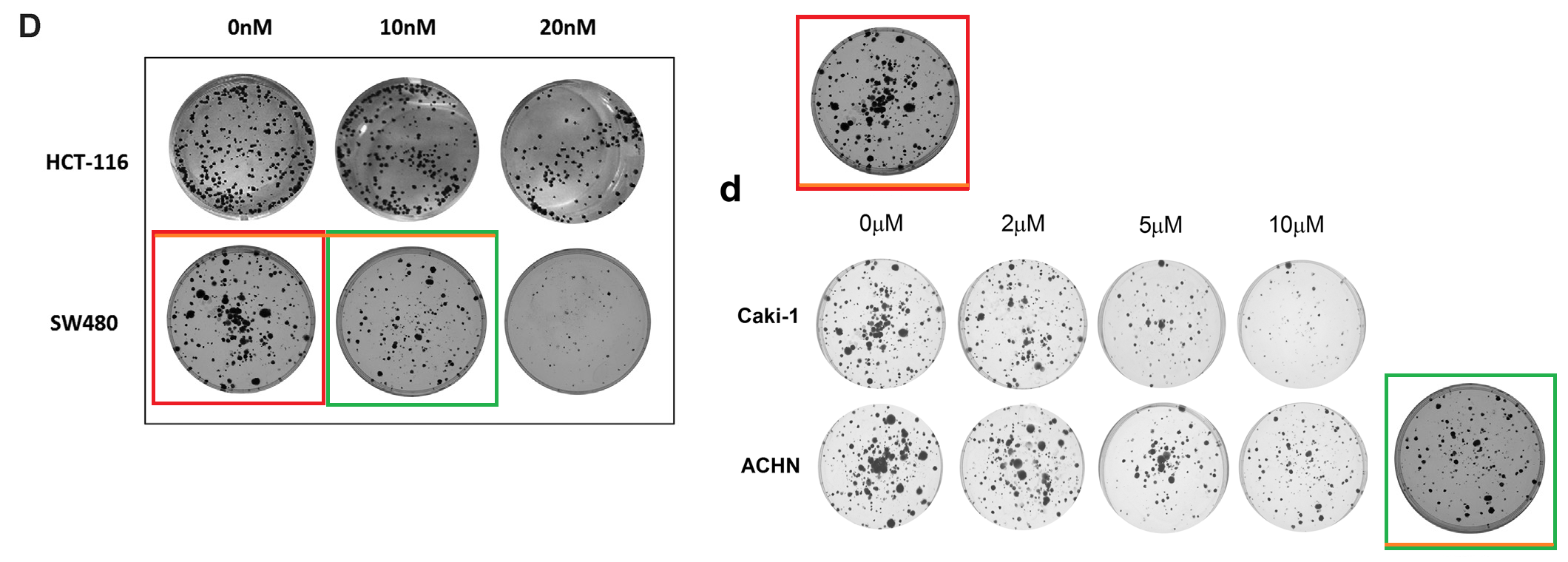
What if nobody cares, as long as the journal pages are filled with something at least distantly resembling a kind of science, and as long as the publication charges are paid?
Update: as Roland Seifert, Editor-in-Chief of Naunyn-Schmiedebergs Archives of Pharmacology, explained below, his journal routinely uses iThenticate software to screen for textual overlap. And yet all of these papermill productions apparently passed the test, which means they have been each purposefully written to evade editorial text plagiarism checks (there is no established software to detect image reuse). Quality forgeries, Made in China.
Dark Satanic Papermills
By Smut Clyde
We live in interesting times. The role of academic ‘papermills’ within the bogus science ecosystem – facilitating and benefiting from the flow of funding from governments to publishers – has become a topic for academic research in its own right (Christopher, 2018; Byrne & Christopher, 2020, Bik, 2020). Things have changed since Nature and Science both rejected Guillaume Filion’s (2014) discovery of a meta-analysis papermill (later reported in in Scientific American by Charles Seife). I expect this research area to grow, and readers must decide whether this post is really the product of my own investigation, or written by a papermill (commissioned to fabricate the results because I was too busy with administrivia).
First a few general points. When the suspicion arises that someone has built their scientific career upon unofficial methods of constructing results, a whole corpus of data is available for close scrutiny to check for creative recycling. Papermills are harder targets because their duplications are distributed across confections signed with different clients’ names.
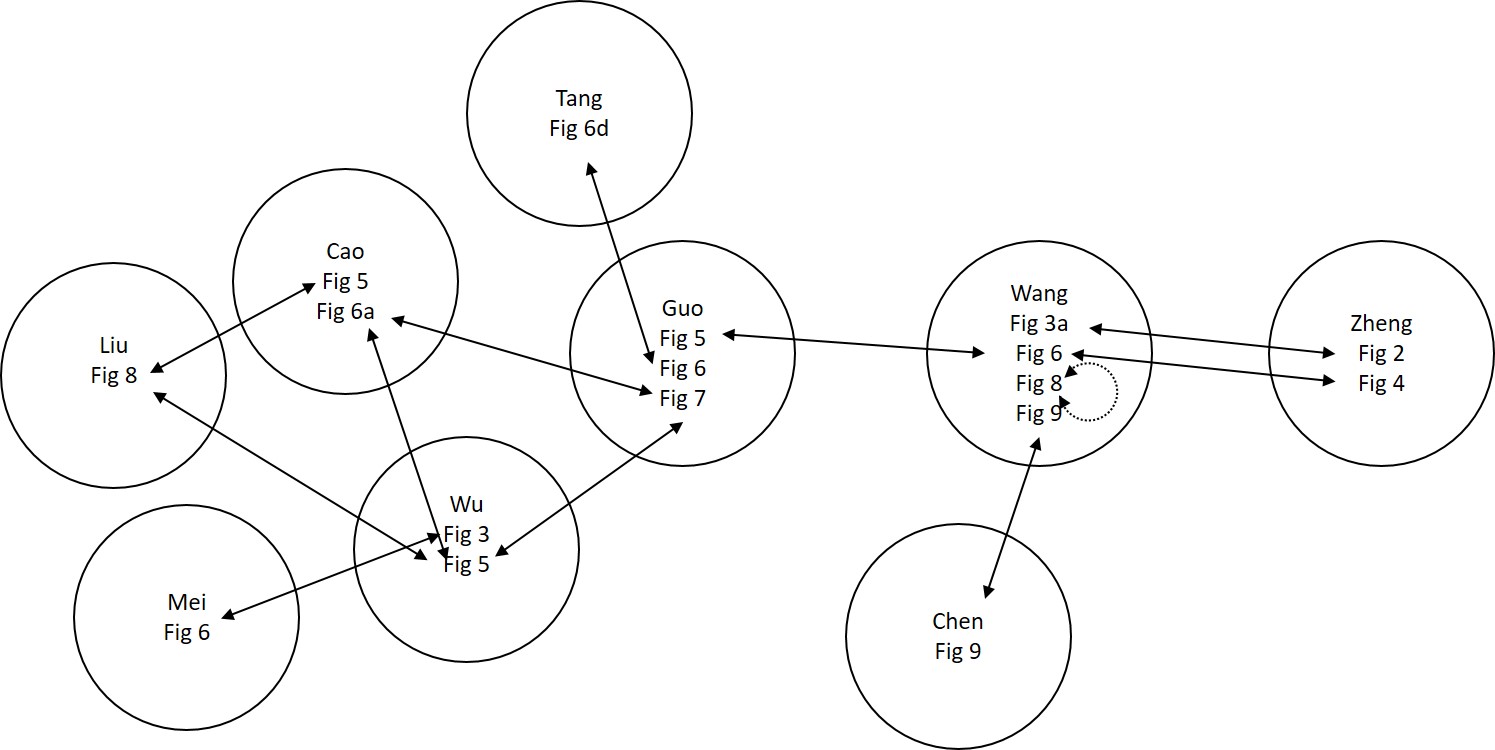
We can make some distinctions. The lower end of the market is shared among chancers who once worked as pipette jockeys in a real lab, before departing with a stash of purloined images from their single area of training, plus a willingness to improvise wildly about whichever other forms of data are demanded by the conventions of the biomed-paper genre (undeterred by unfamiliarity with them). They get away with it because journal editors don’t care.
At the high end are people with established, well-funded laboratories, who can access archives of images of (say) fluorescent mice and tissue-cultured cell spheroids. They supplement their incomes by moonlighting, providing bespoke papers to anyone whose CV has fallen stagnant, drawing on these archives for illustration. These cases only come to light through a combination of accident, and mad phrase-searching google-fu.
So we are only “scraping the surface of the iceberg” (h/t BBB Scientist). Really there is no excuse to get caught at all, but the bogus papers often strew clues to betray themselves. Perhaps the papermill studios think it is more sporting to provide an honest chance to spot the imposture, or else they are afflicted with some kind of gaes.
Anyway, the NIH PubMed indexing database is a useful research resource. People talk trash about PubMed for extending its aegis over predatory journals and bottom-of-the-barrel newsletters of desperation… wasting public money, while lending an imprimatur of approval to papers that are no more than paid press releases. I agree, publishers like ‘e-Century’ – one guy in Wisconsin selling a cheap way for his Chinese colleagues to say they published in an International Journal – are equal parts heinous and hilarious; and if I were a US resident, I would want to know why federal funds are spent hosting the scammer’s website and subsidising his operation.



But in the defense of PubMed, the “Similar Articles” option on its front-end is invaluable for multiplying the number of examples: provide it with one papermill production as the target and you hit the JAK/STAT jackpot every time, more cases spill out across the floor until you are knee-deep in them.
This uncanny accuracy is not really a tribute to the sophistication of the similarity algorithm, and more a reflection of the formulaic, template-based nature of papermill composition, where not only the titles are constructed by Mad-Libs. The similarities are glaring, in other words, except to the journals’ editors and reviewers.

Papermill 2: Italian catering
The first atelier to concern us today uses a single journal as the conduit for most of its torrent of fabrications (there is no telling whether the productions were tried elsewhere but were rejected). This limits the extent of damage the atelier can wreak upon the integrity of the larger scientific edifice, but it still deserves our attention as an instructive microcosm of the industry.
The entrepreneurs evidently began with a small repertoire of Annexin-V / Propidium Iodide FACS files (measuring the proportion of dying cells in a cell culture), these being quite possibly genuine, which they customise from one manifestation to the next with additional stippling of points around the edges.
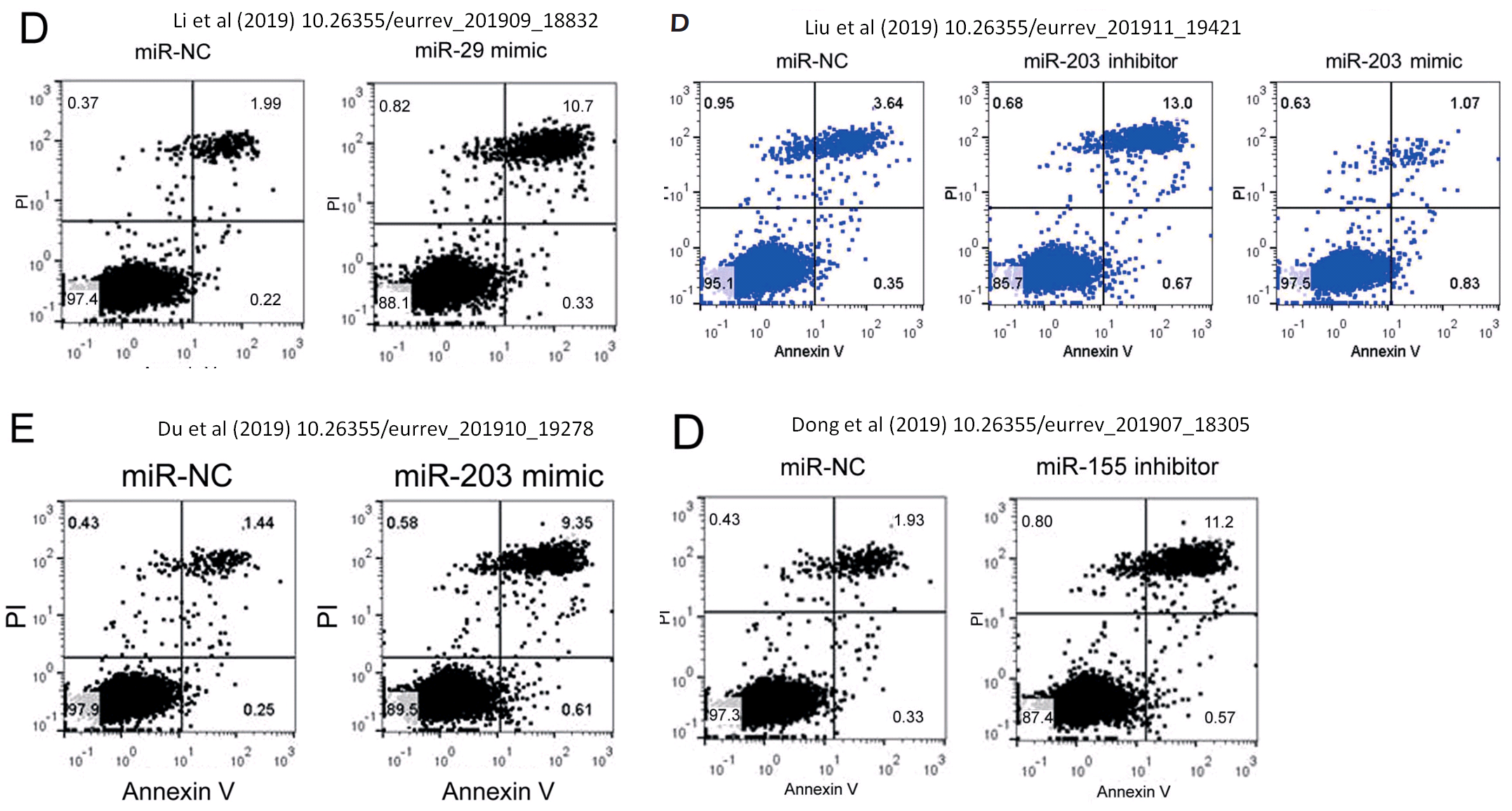
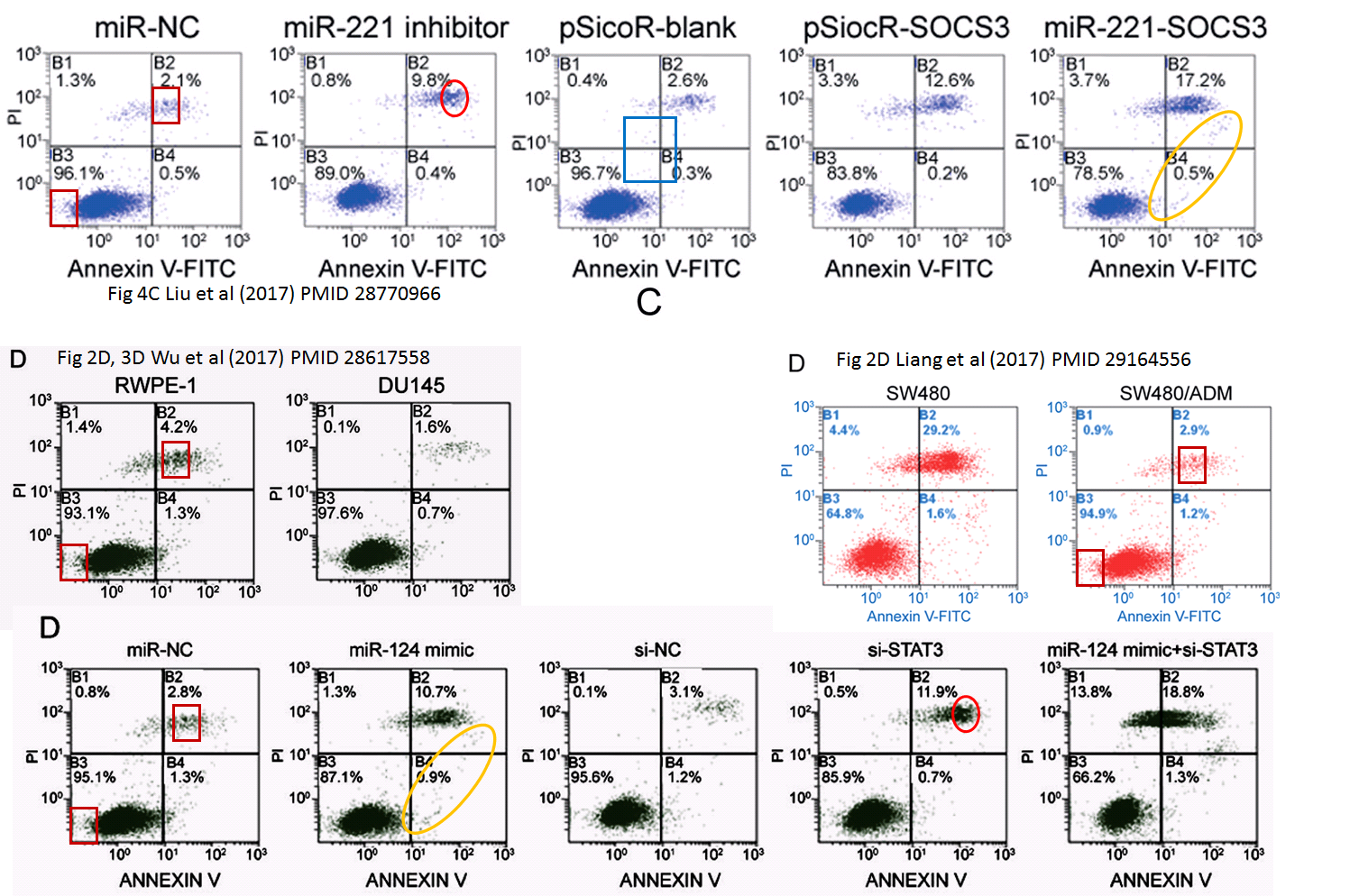
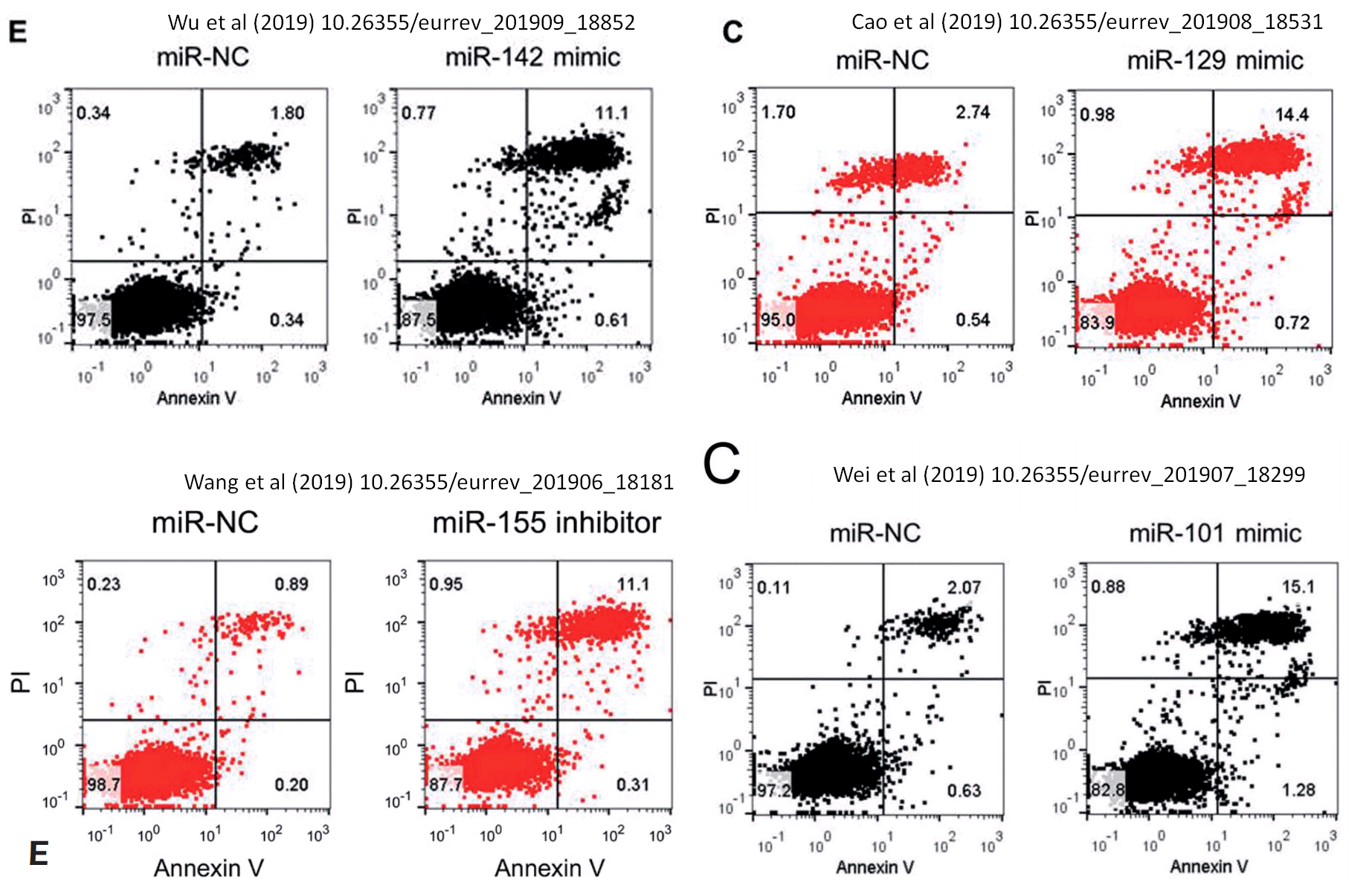


These stand in contrast to the papermill we met a few weeks ago, with its risibly unrealistic “Death-Star-&-Cigar” speculations of what a real FACS plot might look like.
Though that previous papermill sent over 400 known papers down the pipeline, while only 70 have been identified from the present subject of inquiry, so implausibility is not an obstacle and editorial skepticism is only hypothetical.
The studio also possesses a stock of EdU / SSC flow-cytometry data-files, which are sometimes collapsed down to a single horizontal axis to be plotted as a histogram, while at other times they manifest as a pair of lungs (e.g. Wei et al 2019; Dong et al 2019).

Western Blots are the key distinguishing feature. Like the previous papermill, this one lacks a library of stock images (as well as any clear notion of the actual gamut of Western Blot variation). Their chosen style for faking them is a grid of geometrical thick and thin blobs, drawn on a featureless flat gray background. Initially these were high-contrast and sharp-edged, like Morse Code messages painted by Miró with black ink on chrome…
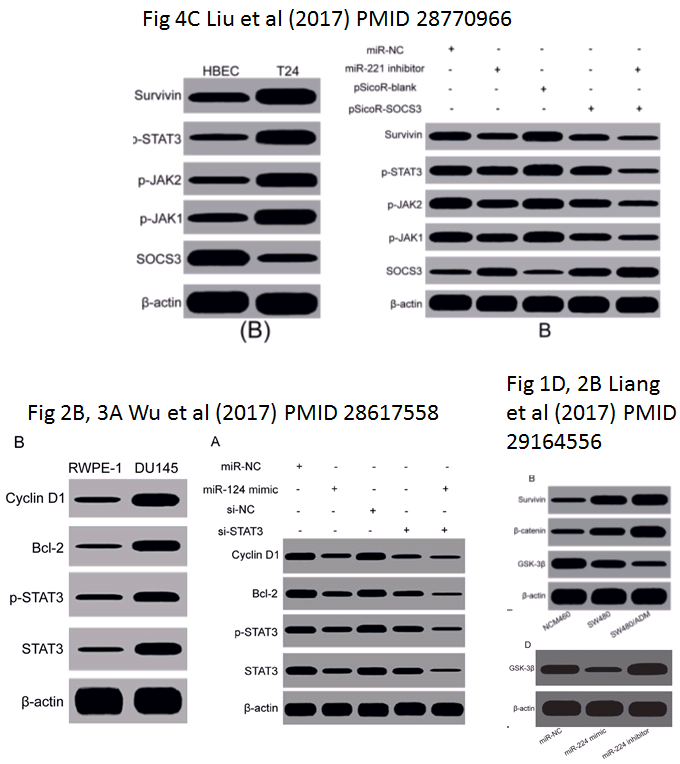
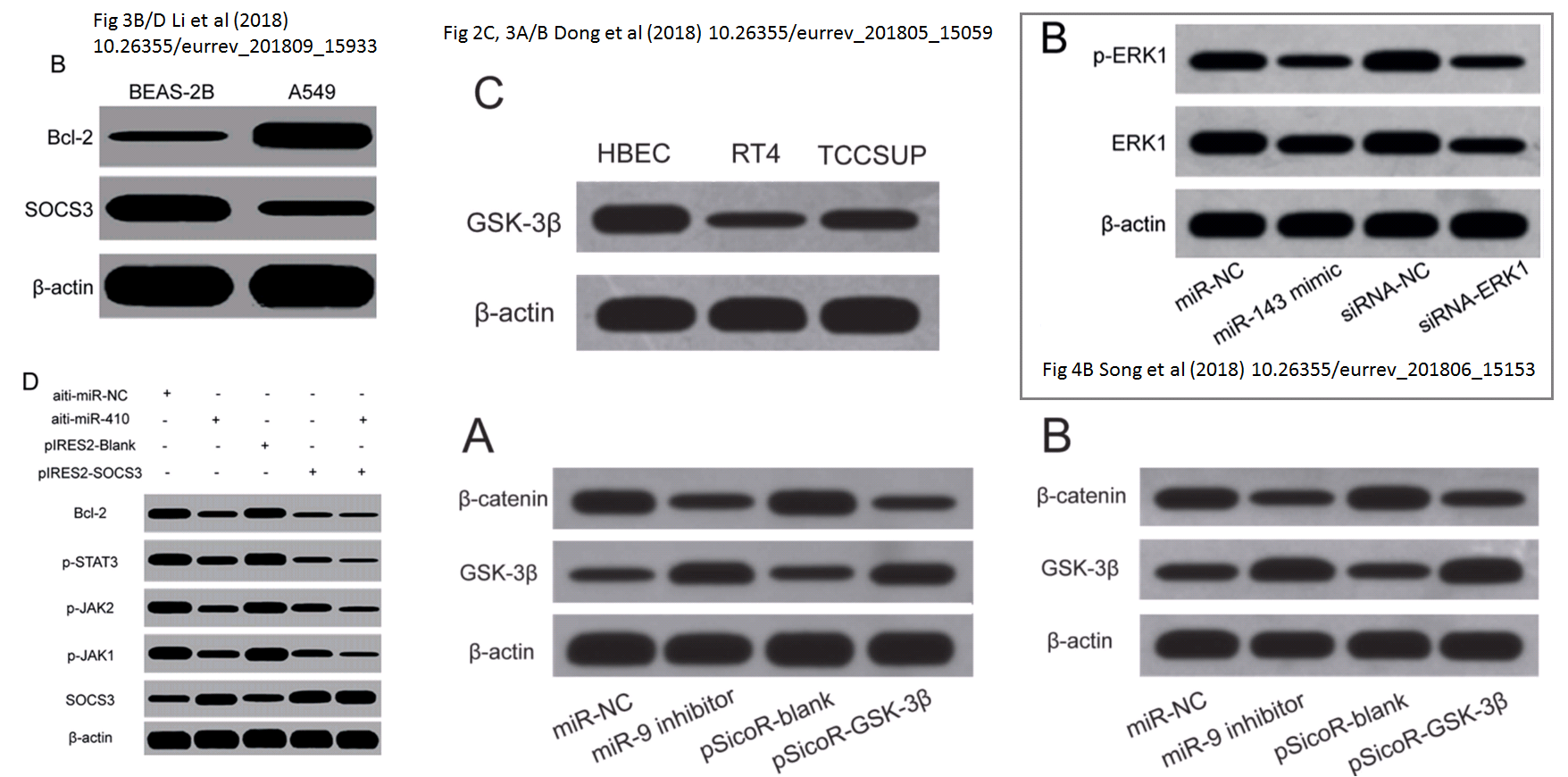
…but in 2019 the studio shifted to a softer-focus version where faint wisps of smoke hang in the foreground. Presumably this was an aesthetic choice, as overcoming the skepticism of peer-reviewers is not really an issue here.

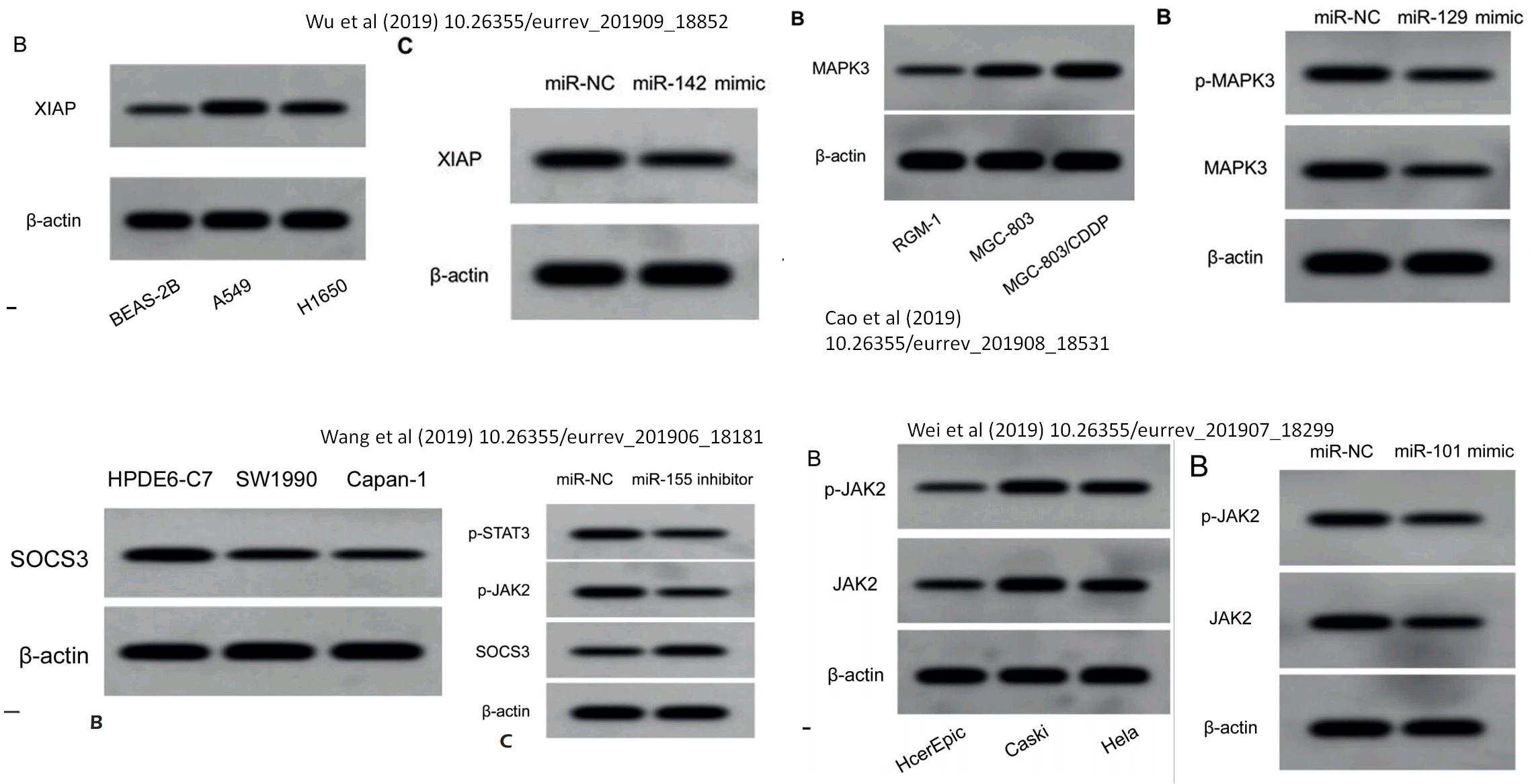
Of the 69 productions so far identified from this studio, 54 appeared in the European Review for Medical and Pharmacological Sciences (ERMPS). The journal’s Editors and peer-reviewers have an expansive mental conception of “What Western Blots should look like” which includes these present examples. The ERMPS Editors also display a high-minded unconcern as to the ways that authors might identify themselves: in many, many cases there is no discernible connection between the Corresponding Author’s name and their email address. With an e-address like “ppfrrbfbrt@sina.com” there is no discernible connection to anything except a sound-effect of Bill the Cat blowing raspberries.

It is almost as if the papermill sometimes creates an identity and email account to handle manuscript submission for one customer (it is best to keep the nominal authors of ghost-written manuscripts locked out of the submission / revision / re-submission loop; their involvement in the cycle never ends well), then sees no reason to change these details when submitting another manuscript (or the same one) in the name of a second client. The alternative explanation is that a surprising number of Chinese academics prefer to handle their academic correspondence using their Tinder accounts. From the perspective of the journal, none of this matters as long as their cheques clear to pay the APCs.
The customers are distributed across China, with no obvious epicentre.
Papermill 3, the society insiders
PubPeer contributor “Xylocampa Areola” called attention to the third of the papermills. I created a spreadsheet to match but it is a work in progress, with only 35 38 42 48 entries to date, though that will grow and the seam is far from mined out.
To generalise from the present limited sample: this oeuvre is marked by an unusual level of internal self-citation. That is, commissioning a paper is an entire package that includes citations of one’s “work” accruing from later papers bought by other customers. This provides another way of finding new examples, when the PubMed ‘Similar Papers’ option runs dry.

In consequence these papers form a kind of self-referencing, internally-consistent canon of Alternative Molecular Biology. It is as if a textbook fell out of a parallel universe and into what we like to call “reality”: another universe in which the pharmacopoeia of Traditional Chinese Medicine works and cures cancer, and all that remains is to determine the mechanisms. So the title template is [traditional-herb-extracted phytochemical / secondary metabolite] [promotes apoptosis / abrogates metastasis / deters proliferation] of [hepatoma / colorectal carcinoma / lymphoma / glioma / other cancer-cell-line].
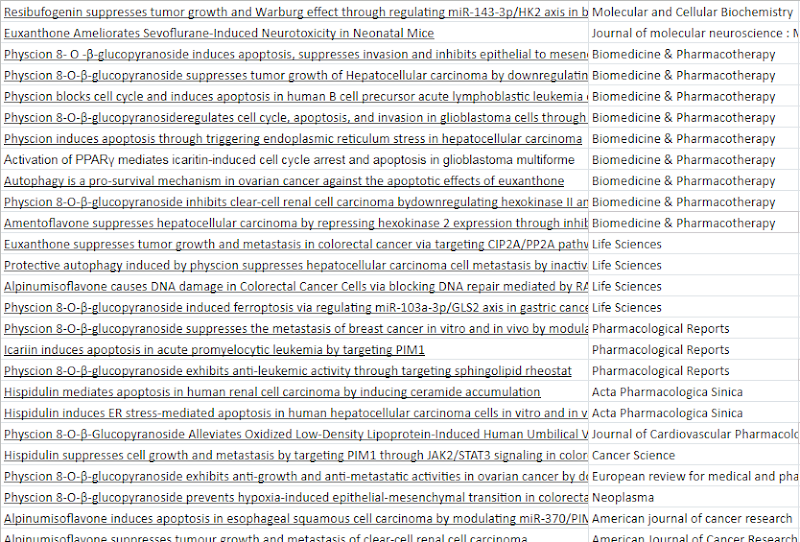
I note parenthetically that a minority of entries in the spreadsheet use different Worship Words from a different paradigm to convince editors that the discoveries are important. Specifically, LncRNA-XIST appears twice in this corpus, and miR-137 once. The favourite cancer-curing phytochemicals are Physcion (17 papers), Euxanthone (6), Alpinumisoflavone (6) and Hispidulin (5). Amentoflavone, Xanthoangelol, Soyasapogenol, Resibufogenin, Chrysophanol and Icaritin / icariin appear twice each; Furowanin A, FL118 and PTTG once each. Those authors are riding the miRNA / lncRNA bandwagon, which shares TCM’s advantage that there is no reputational damage from failures to replicate one’s report that “miRNA XXX affects Y through pathway Z”.
A major driver of the rising tide of biomed forgery was the decision by the Chinese Central Committee, in their collective wisdom, that TCM shall be made to work. This created well-remunerated careers for researchers willing to deliver progress reports towards that destination, with the prospect that the PIs will have been elevated to the Academy of Sciences by the time that each once-promising research avenue is quietly abandoned and never mentioned again. Their decision also spawned journals to accommodate those progress reports.
Every so often in this neo-herbalist literature one encounters papers where the WBs and flow-cytometry plots and IHC-stained tissue slides are not recycled or blatant fakes, for there are researchers who may be inventing their positive results, while still conducting experiments to provide cherry-picked illustrations for those illusory claims. But in general, who would bother?
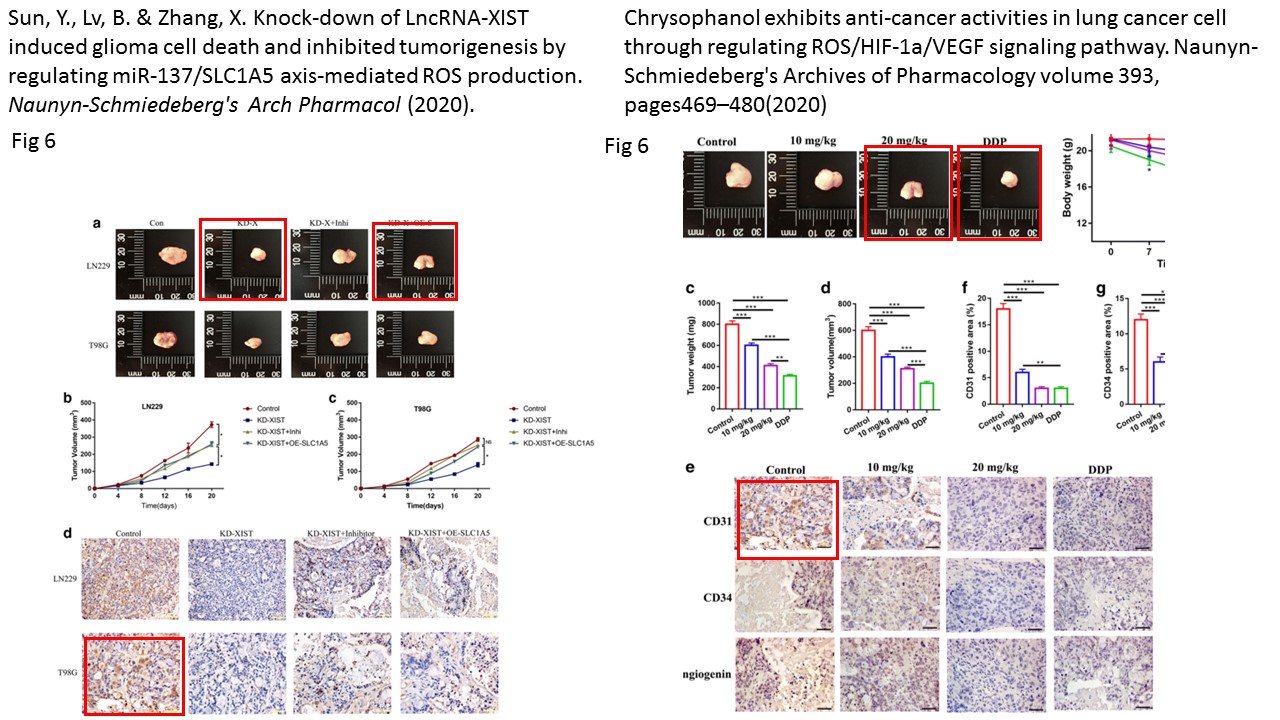
Putting that digression behind us, we can consider the unifying diagnostic features of this papermill oeuvre (these are also insights into the image archives in the millers’ possession, and into their laboratory resources). They have a good enough supply of Western Blots that they do not need to fabricate them, and if they sometimes reprise these images due to pride in their perfection, who am I to cavil?
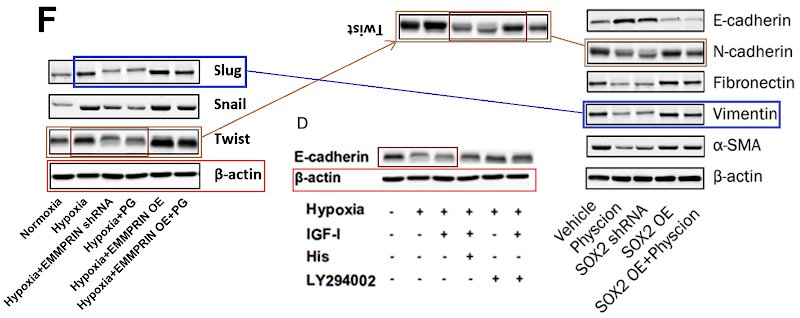
Evidently the limiting resources are:
1. Images of Matrigel migration / invasion assays and scratch migration assays.

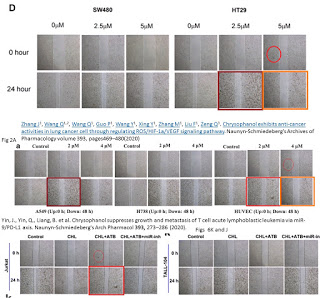
2. A few excised xenograft tumors on black backgrounds, measured to quantify growth rates.
3. Immunofluorescence microphotography.

4. The stock of IHC tissue slides is small so they must be creatively relabelled and arranged in many combinations, without the luxury of settling on a single tumour type or protein or treatment regimen. If I showed more examples here, someone would accuse me of flogging a dead horse with another dead horse.
5. One recurring suite of flow-cytometry apoptosis plots has an ominous, thundercloud appearance. Perhaps the Society for the Prevention of Cruelty to Dead Horses will forgive me for this montage.
This evolved into a second suite which is customised more between appearances, with the upper-right quadrants of the plots becoming venues for fiestas of clone-tool stamping, or a kind of Space Invaders game.
The reviewers can be forgiven for not comparing the figures in the manuscript before them with others in the literature, but it is harder to understand how they remained so oblivious when lightly-tweaked versions of the same panels appear in multiple adjacent figures within a single paper. I had heard that sciences other than physics are just stamp-collecting, but that doesn’t mean that rearranging stamps in a collection is enough to make it science.
A third suite has shown up less often.
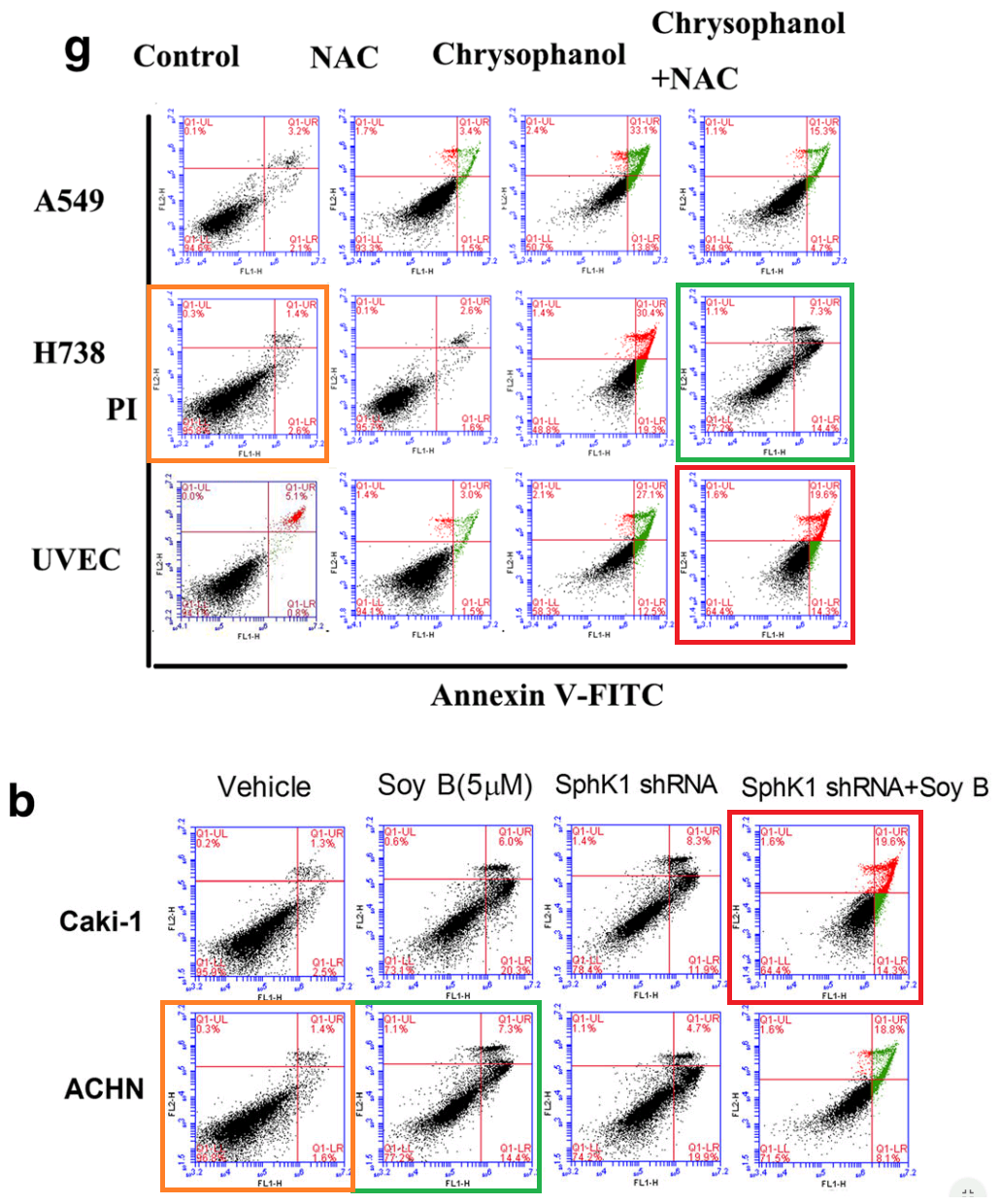
The evidence suggests that the millers are not just catering to clinicians, for whom an English-language publication is a one-off: a quaint prerequisite for graduation, like hiring a formal academic gown for the ceremony, though more expensive. They also have a clientele of actual academics, frequent fliers who are paying repeatedly and buying entire research careers (and CVs). The scale of cross-citation is one reason for this belief (I). In addition:
II. Authors’ names repeat, even in this small sample.
III. Many affiliations are to research institutions or to hospitals at a high level, rather than to specialised clinical departments.
The most frequent names are in fact a group from Qingdao Hospital. They were authors of the earliest papers in this corpus, in 2016, in e-Century outlets (before the studio’s ambition grew and they advanced to the giddy empyrean of purportedly non-predatory journals from the Elsevier stable) – creating the unexpected spectacle of highly-cited e-Century papers. Their papers displayed many forms of illustration before these were manifested elsewhere, and they have been known to sign papers with actual institutional email addresses. In fact I would not be surprised if the Qingdao team are the papermill… originally forging for their own papers in an amateur capacity, before they succumbed to the blandishments of friends and colleagues brandishing cash, and turned professional.
Their output is not concentrated in any one journal. No-one will be surprised by the prominence of Elsevier journals (nine papers in Biomedicine & Pharmacotherapy; six in Life Sciences; four in Pharmacological Reports). Less expected are the seven in Naunyn-Schmiedeberg’s Archives of Pharmacology – the “official journal of the German Society of Experimental and Clinical Pharmacology and Toxicology” (published by Springer). And surely a story lies behind the acceptance of four of these anatomy-free pharmacological fantasies by Anatomical Record, brought to us by the American Association for Anatomy, and published by Wiley. I have not examined the archives of these journals systematically; I don’t do “systematic”.
The two papermill lists are available for your perusal here: Papermill 2 and Papermill 3.
Update 8.02.2021.
Naunyn-Schmiedeberg published on 6 February 2021 this editorial. It has 20 points on how to spot a papermill and how the journal reacted to end the scams. Do read it, it’s very informative!
Roland Seifert, How Naunyn-Schmiedeberg’s Archives of Pharmacology deals with fraudulent papers from paper mills, (2020). DOI: 10.1007/s00210-021-02056-8

Donate!
If you are interested to support my work, you can leave here a small tip of $5. Or several of small tips, just increase the amount as you like (2x=€10; 5x=€25). Your generous patronage of my journalism will be most appreciated!
€5.00


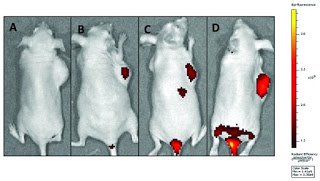
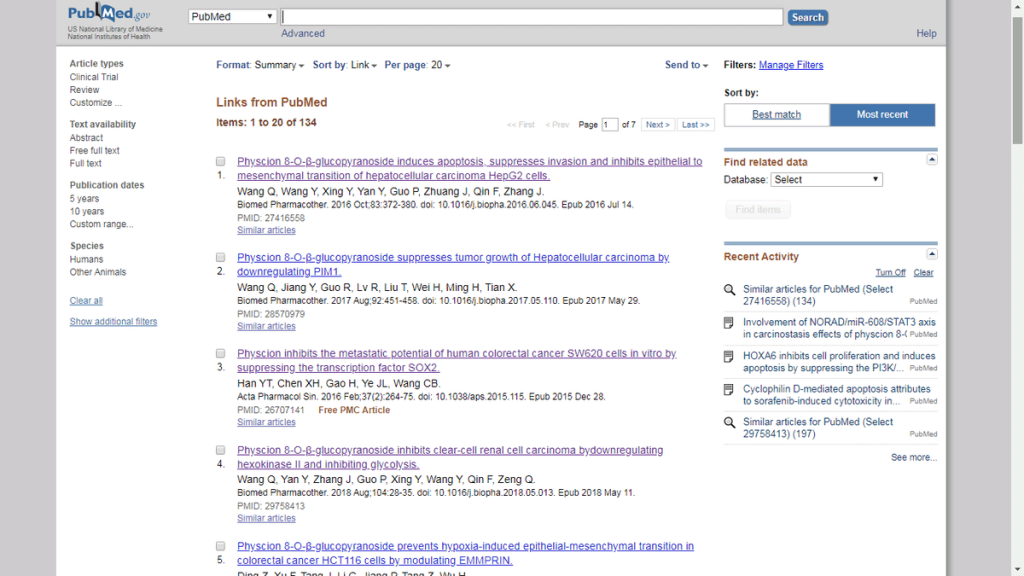

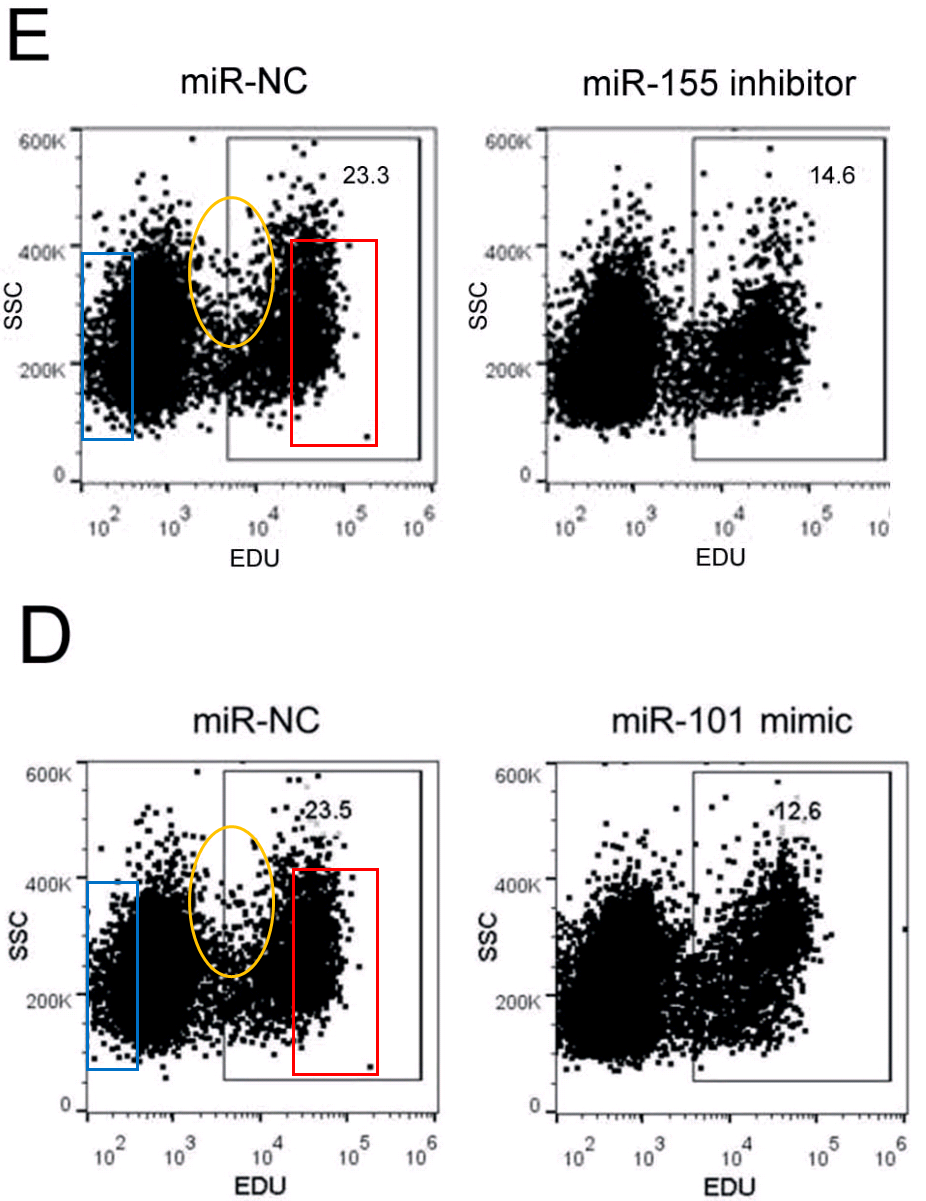
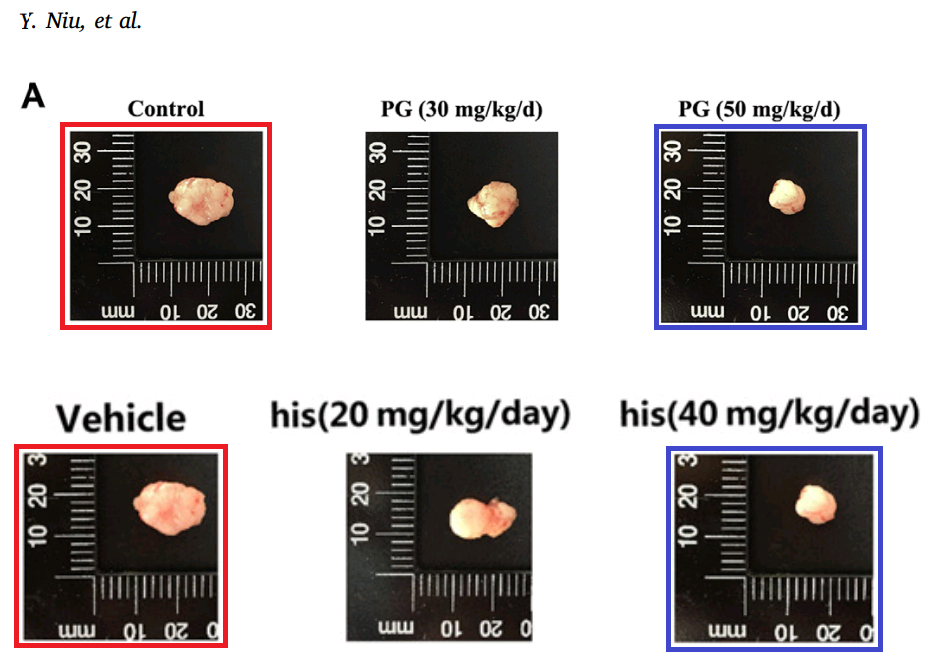
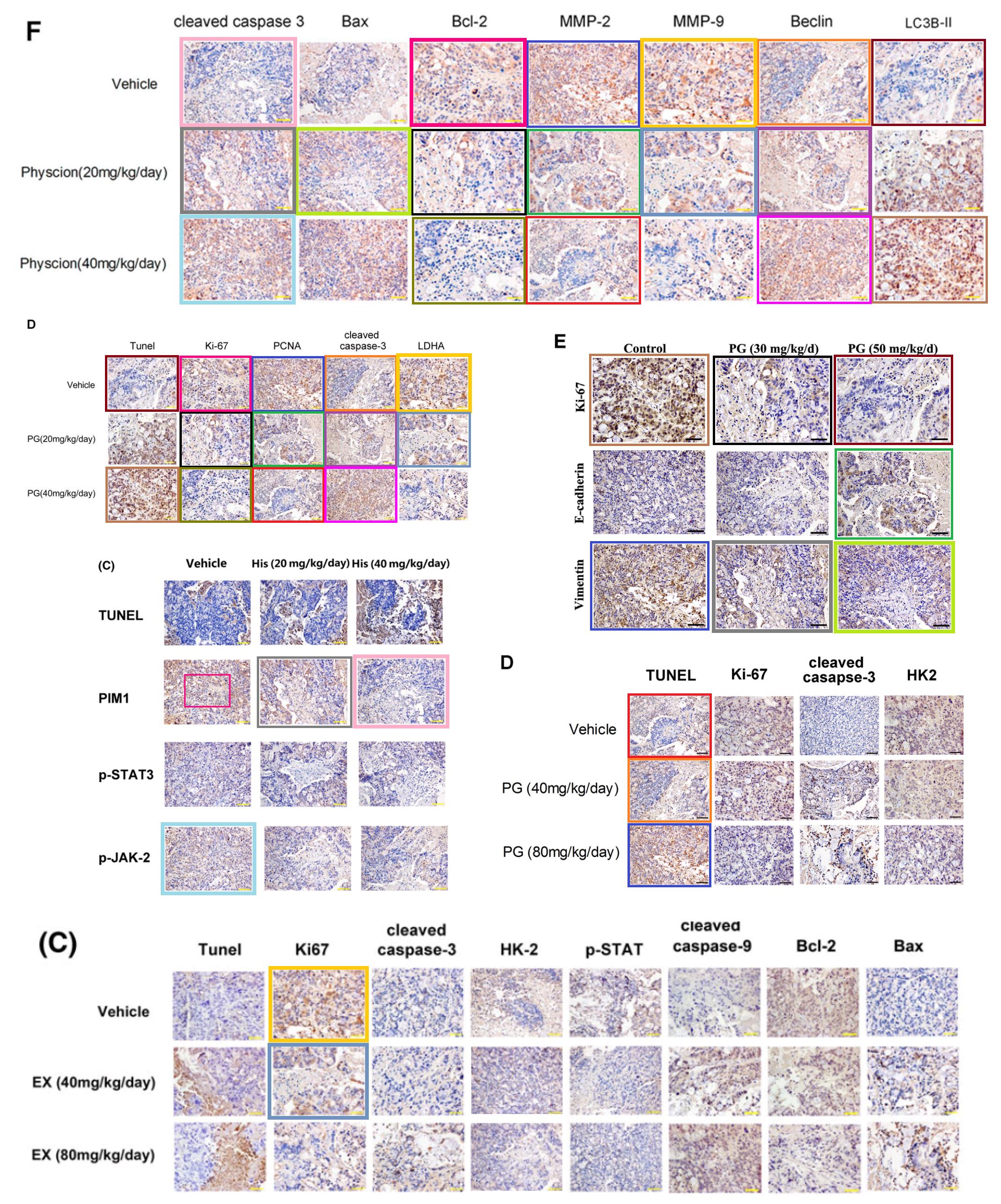

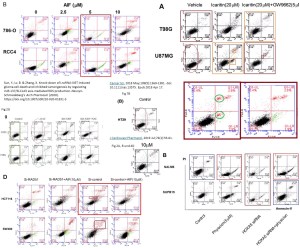

The Editor-in-Chief of Naunyn-Schmiedebergs Archives of Pharmacology, Roland Seifert, wrote to me that he “has implemented a number of measures to retract the fake papers and avoid future fake papers immediately after he had learned about the severity and magnitude of the problem. He is shocked that this could happen in this journal staffed with excellent and rigorous editors.”
LikeLike
Another message from Naunyn EiC Seifert:
LikeLiked by 1 person
and another message from Seifert:
LikeLike
and another two messages from Roland Seiffert:
“Dear Mr. Schneider,
many thanks again for having brought to my attention in February 2020 the fake papers from paper mills in Naunyn-Schmiedeberg’s Archives of Pharmacology. As indicated in my previous blog contributions, I acted immediately to address the problem. In the meantime, the Instructions for Authors were amended to avoid future fraud as far as possible.
To this end, 5 papers have been retracted with 5 more hopefully to follow in 2021. We also prevented a total of 40 fake papers to be published in our journal. We estimate that about 5% of the papers submitted to this journal are from paper mills. In March 2021 , I will publish an Editorial in Naunyn-Schmiedeberg’s Archives of Pharmacology, providing a detailed analysis of our experiences with paper mills.
Kind regards
Roland Seifert
Editor-in-Chief
Naunyn-Schmiedeberg’s Archives of Pharmacology”
followed up by:
“I really appreciate your detailed article on the paper mills. This information was extremely helpful for us to crack down on these malicious publication outlets. Sometimes, it is criticized that journals are responding too slowly to this type of fraud. One reason why it is not so easy to respond rapidly simply constitutes the fact that communication with fake authors is very difficult, slow or even non-existent after fake publication happened. In addition, honest scientific journals must play the game by the COPE rules which process takes time. But fake authors don’t care about COPE rules. This should be taken into consideration when wondering about long lag times betwen an alert on a blog site and a retraction note in a journal.“
LikeLike
Pingback: Un po' di serietà, tra parentesi - Ocasapiens - Blog - Repubblica.it
Papermill #3 is boutique in scale, with (I guess) a three-digit production count, but well-run. They’re not ambitious in scope, no dramatic breakthroughs. They only fake small, incremental jigsaw pieces, which other people incorporate in their complete jigsaw puzzles… for these papers are cited! – not just in other productions from the same mill, but also in review papers about the importance of miRNA-XXX or apoptosis pathway YYY. The deal is that you (as customer) specify the herbal extract molecule central to your fake-research career. They dip randomly into their bag of flow cytometry plots, WBs, immunofluorescence and IHC-stained tumor slices, and weave a new story around them about how that molecule controls cancer ZZZ through immunomodulation.
Individually, each fake only subtracts slightly from our net knowledge. But they add up
LikeLike
“A major driver of the rising tide of biomed forgery was the decision by the Chinese Central Committee, in their collective wisdom, that TCM shall be made to work.”
You have to laugh. There does seem to be a shit storm for the Chinese authorities in the media at present. Winnie the Pooh was seen wearing a face mask, except Winnie the Pooh has been banned. As we all know Xi is sylph-like and not at all like Winnie the Pooh.
https://www.theguardian.com/world/2018/aug/07/china-bans-winnie-the-pooh-film-to-stop-comparisons-to-president-xi
LikeLike
One example of a loyal customer is Xiaoping Pan, whose research career consists of three papers purchased from mill #3.
https://www.researchgate.net/scientific-contributions/2120022211_Xiaoping_Pan
He is even credited in other papers from the mill, for sharing his non-existent transfection vectors!
https://www.ncbi.nlm.nih.gov/pubmed/30153494
“The DNMT1 and Sp1 overexpressing vector were kindly provided by Dr. Pan’s Lab[28].”
LikeLiked by 1 person
Funny thing is that this Xiaoping Pan (潘小平)is a Chief Doctor specialized in cardiovascular interventional therapy at Wuhai People’s Hospital (Pan is also a Vice President for the hospital) in Inner Mongolia in China. How come he also has the expertise publishing on cellular research evaluating some compound on liver cancer cells?
That’s very talented for a single doctor to be specialized in both clinical cardiology and basic science lab research on oncology pharmacology, and obviously TCM.
http://inews.nmgnews.com.cn/system/2016/11/26/012198475.shtml

LikeLike
Monumental piece of work. Deeply impressed.
In a system where critical thinking is punished what do you expect?
The economic reforms (adopting old-fashioned capitalism) mean than the system will not collapse economically. The Party will not give up power (trials in the morning, executions in the afternoon). It will likely continue in the same direction, or worse, Winnie the Pooh (Xi) is not cuddly.
LikeLike
The favourite cancer-curing phytochemicals are now Physcion (23 papers), Alpinumisoflavone (9), Euxanthone (7), Hispidulin (7) and Amentoflavone (5). Xanthoangelol, Soyasapogenol, Resibufogenin, Chrysophanol, Icaritin / icariin and Furowanin A appear twice each; FL118 and PTTG once each.
LikeLike
Yang et al (2019), “Physcion 8-O-β-Glucopyranoside Alleviates Oxidized Low-Density Lipoprotein-Induced Human Umbilical Vein Endothelial Cell Injury by Inducing Autophagy Through AMPK/SIRT1 Signaling”
“is being etracted due to manipulated figures”.
Xylocampa Areola, take a bow.
LikeLike
Second retraction: https://onlinelibrary.wiley.com/doi/full/10.1111/cas.14487
The above article from Cancer Science , first published on 25 March 2018 in Wiley Online Library (wileyonlinelibrary.com) and in Volume 109, pp. 1369‐1381, has been retracted by agreement between the authors, the journal Editor in Chief Kohei Miyazono, and John Wiley & Sons Ltd. The retraction has been agreed due to the result of Transwell assay displayed in Figures 3E and 4D. They were generated for another study, which has been published as Cell Biochem Funct. 2019 Apr;37(3):128‐138.
The Transwell images were the least of the paper’s problems, and this rationale has been worded to make it sound as if an innocent mistake was made.
LikeLike
Pingback: Begger’s test for Schrödingerean predator-prey system – For Better Science
Pingback: Society journal Biochemical Reports, ravaged – For Better Science
Pingback: The Stock Photo Paper Mill – Science Integrity Digest
Pingback: Il Piccolo Mulino Verduci Frodotore – For Better Science
Pingback: The credibility of science is in the balance: a proposal for positive change – Notes from the research frontier
Pingback: Towards equal opportunity for prostate, breast and ovarian cancers – For Better Science
Several recent Pubpeer entries reveal recent retractions of articles from Cancer Biotherapy and Radiopharmaceuticals (published by Mary Ann Liebert, Inc.). Quite a few of these retraction notes have a similar text:
“Cancer Biotherapy and Radiopharmaceuticals officially retracts the paper (….) due to the discovery that the paper was submitted from a paper mill.”
Invariably, these retraction notes do not list details about views of the authors and/or information about efforts to contact the authors.
Does this imply that the journal / publisher has been able to locate a real paper mill? Does this imply that the journal / publisher had been able to locate the name of this paper mill and/or the site where it is located and/or names of individuals who are running this paper mill?
Anyone any idea?
See https://pubpeer.com/publications/90D07A216E650BA3DFACF0DB68493D and https://pubpeer.com/publications/D4E1FCE5752FF8B98F1E4FC3FAC1AD for some examples.
LikeLike
Update:Tulipa Fosteriana recently posted at Pubpeer 10 identical comments alongside recently retracted articles, see https://pubpeer.com/publications/D1ED55DAFDC363DBFBC20AF0B81A46 for an example.
These comments are: “An August 19, 2021 announcement [at http://www.nhc.gov.cn/cms-search/xxgk/getManuscriptXxgk.htm?id=159bcc53148340d48336060e65571a1c ] by “National Health Commission of the People’s Republic of China” reported the results of investigation of 10 papers flagged on Pubpeer, together with disciplinary actions against the authors. The current paper is the #9 case in the list and the investigation concluded that this paper was purchased from a papermill. Here is a screenshot: [not copied]”.
I am wondering why Cancer Biotherapy and Radiopharmaceuticals / Mary Ann Liebert, Inc. does not list this information in the above mentioned retraction notes.
LikeLike
The retractions all occurred before the announcement came out, though, so I can’t blame the editors for not including that information. It’s not like the National Health Commission of the People’s Republic of China let journals know in advance about their verdicts.
LikeLike
It seems unlikely that the authors told the editors “OK gov, it’s a fair cop, we bought the manuscript from a mill”. I prefer to think that the editors of Cancer Biotherapy and Radiopharmaceuticals read this post and found the evidence convincing.
LikeLike
Pingback: Editors and other real papermill heroes – For Better Science
Pingback: A MAGIcal Special ERMPS Issue – Science Integrity Digest